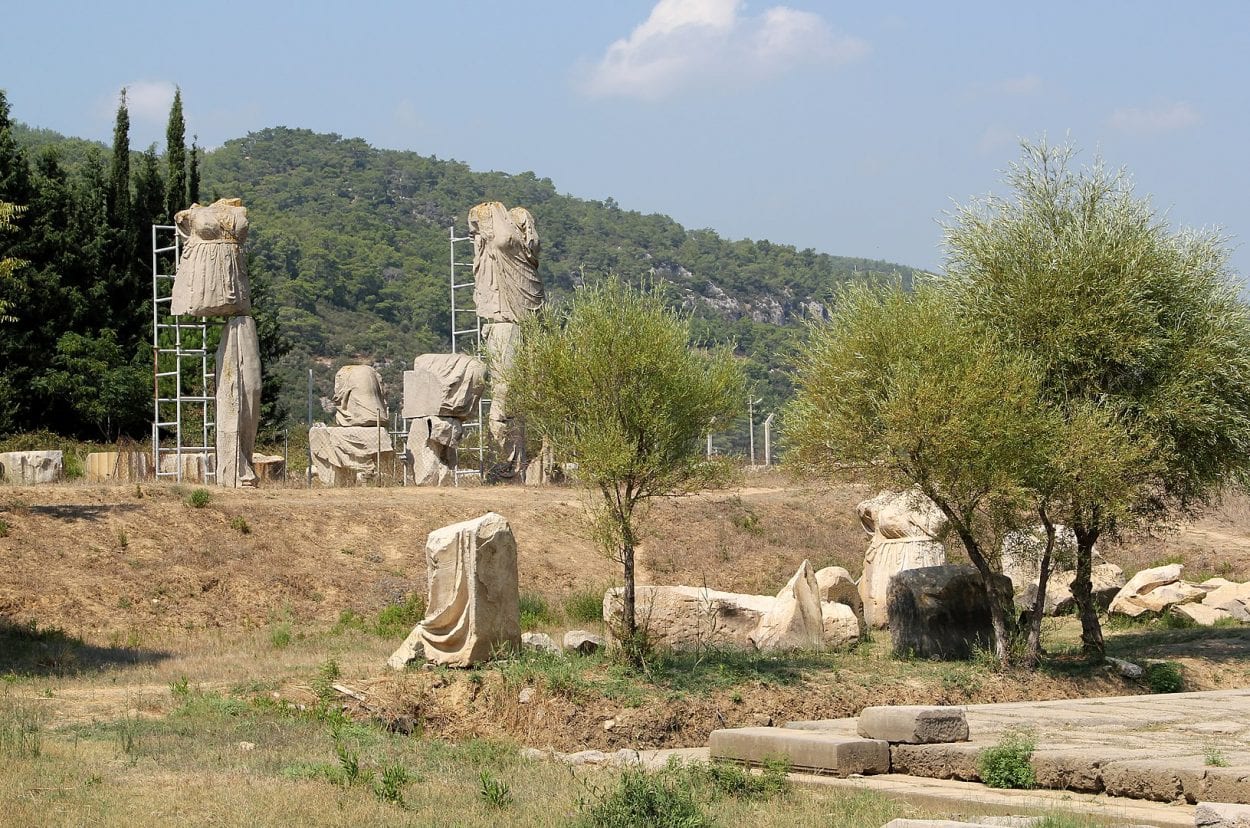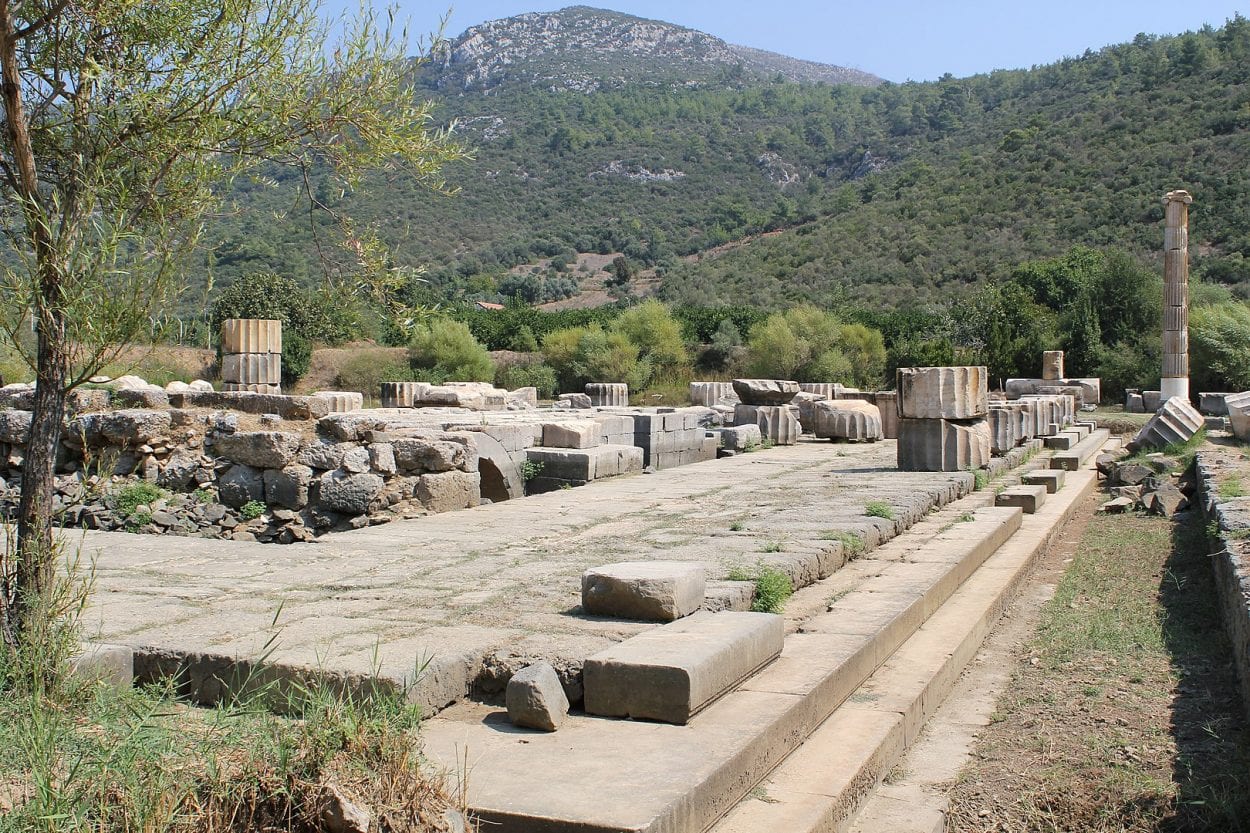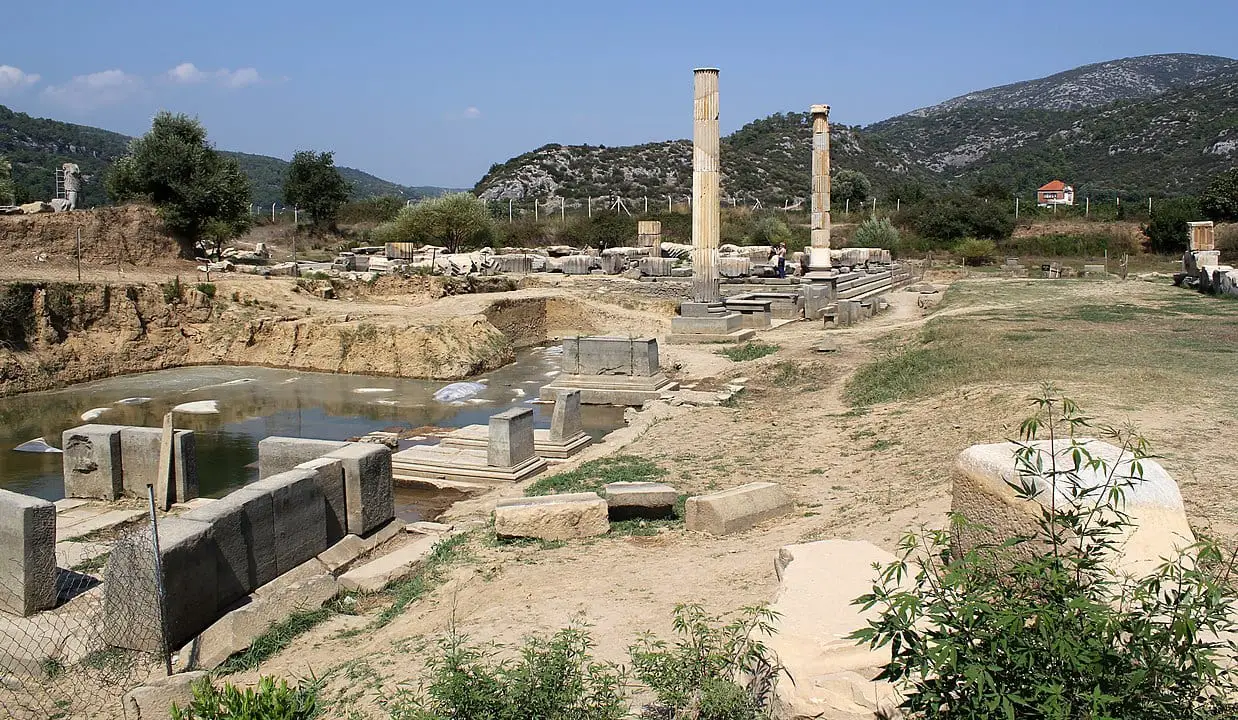Claros was an ancient Greek sanctuary located near the present-day town of Ahmetbeyli in the Menderes district of Izmir Province, Turkey.
The sanctuary was part of the territory controlled by the Ionic city of Colophon, one of the oldest of the twelve cities of the Ionian League, which in Greek mythology was founded by Damasichthon & Promethus, two sons of Codrus, King of Athens.
The foundations of the sanctuary are also shrouded in mythology, connecting Claros with the myth of the Epigoni who conquered Thebes.
Archaeological evidence suggests that the site was active from the 10th century BC, evident by the discovery of Protogeometric pottery that emerged after the collapse of the Mycenaean-Minoan Palace culture between 1030 and 900 BC.

The earliest mention of Claros was in the Homeric Hymns: III – To Delian Apollo, and IX – To Artemis, written during the 6th to 7th century BC. During this period, several altars and a marble temple dedicated to Apollo was constructed adjacent to a sacred spring, with successive monumental structures, cult statues of Apollo, Artemis and Leto, and a larger Doric Temple of Apollo constructed in the third century BC.
A sacred cave near the Temple of Apollo, which was an important place both in the Hellenistic and Roman eras, points to the existence of a Cybele cult that was mentioned in text by Pliny the Elder who remarked: “At Colophon, in the cave of the Clarian Apollo, there is a pool, by the drinking of which a power is acquired of uttering wonderful oracles; but the lives of those who drink of it are shortened”.

After the beginning of the Roman Province of Asia (also called Asiana) in 133 BC, the fame of the oracle at Claros and the ceremonial rituals raised the authority of the sanctuary on a similar scale to that of Delphi and Didyma.
Rare ceremonies such as the hecatomb were performed for crowds, in which four rows of iron rings attached to heavy blocks were used to sacrifice 100 cattle simultaneously.
Deforestation in the region led to flooding that buried Claros in alluvial silt until it was discovered by the German archaeologist Carl Schuchhardt in 1886.
Header Image Credit : Ingeborg Simon – CC BY-SA 3.0





